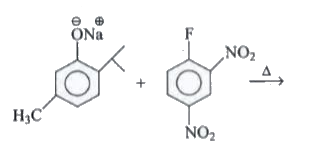Which is employed for synthesis monoclonal antibody by hybridisation technique
RBC
Liver cells
Tumour cells
Nerve cells
The correct Answer is:C
Step-by-Step Solution:
1. Understanding Monoclonal Antibodies: Monoclonal antibodies are identical antibodies produced by a single clone of cells. They are used in various applications, including diagnostics and therapeutics.
2. Hybridoma Technology: This is the technique used for the production of monoclonal antibodies. It involves the fusion of two different types of cells to create a hybrid cell that can produce antibodies.
3. Selection of Cells: The two types of cells used in hybridoma technology are:
- Spleen Cells: These are derived from mice that have been immunized with a specific antigen. They are responsible for producing the desired antibodies.
- Myeloma Cells: These are tumor cells that have the ability to grow indefinitely in culture. They do not produce antibodies but can be fused with spleen cells to create hybrid cells.
4. Fusion Process: The spleen cells and myeloma cells are fused using a substance like polyethylene glycol. This process creates hybrid cells known as hybridomas.
5. Screening and Selection: The hybridomas are then screened to identify those that produce the desired monoclonal antibody. The selected hybridomas can be cultured to produce large quantities of the antibody.
6. Conclusion: The correct answer to the question is that tumor cells (myeloma cells) are employed for the synthesis of monoclonal antibodies by the hybridization technique.
Final Answer: Tumor cells
---
- Spleen Cells: These are derived from mice that have been immunized with a specific antigen. They are responsible for producing the desired antibodies.
- Myeloma Cells: These are tumor cells that have the ability to grow indefinitely in culture. They do not produce antibodies but can be fused with spleen cells to create hybrid cells.
Topper's Solved these Questions
- PRINCIPLES AND APPLICATIONS OF BIOTECHNOLOGYBOOK - DINESH PUBLICATION ENGLISHCHAPTER - PRINCIPLES AND APPLICATIONS OF BIOTECHNOLOGYEXERCISE - CYG
10 Videos
- PRINCIPLES AND APPLICATIONS OF BIOTECHNOLOGYBOOK - DINESH PUBLICATION ENGLISHCHAPTER - PRINCIPLES AND APPLICATIONS OF BIOTECHNOLOGYEXERCISE - Brain Teasers
5 Videos
- PRINCIPLES AND APPLICATIONS OF BIOTECHNOLOGYBOOK - DINESH PUBLICATION ENGLISHCHAPTER - PRINCIPLES AND APPLICATIONS OF BIOTECHNOLOGYEXERCISE - Brain Teasers
5 Videos
- PLATYHELMINTHES-THE FLAT WORMSBOOK - DINESH PUBLICATION ENGLISHCHAPTER - PLATYHELMINTHES-THE FLAT WORMSEXERCISE - check your grasp
9 Videos
- REPRODUCTION IN ORGANISMSBOOK - DINESH PUBLICATION ENGLISHCHAPTER - REPRODUCTION IN ORGANISMSEXERCISE - Check Your Grasp
19 Videos
Similar Questions
Knowledge Check
Which is the best synthesis of
 A
A B
B C
C Dall are incorrect
Dall are incorrectWhich is best synthesis of
 ABr2−−→feBr3HNO3−−−→H2SO4HNO3−−−→H2SO4CH3ONa−−−−−→CH3OHBHNO3−−−→H2SO4HNO3−−−→H2SO4Br2−−−→FeBr3CH3ONa−−−−−→CH3OHCHNO3−−−→H2SO4Br2−−−→FeBr3HNO3−−−→H2SO4CH3ONa−−−−−→CH3OHDHNO3−−−→H2SO4Br2−−−→FeBr3NaOCH3−−−−−→CH3OHHNO3−−−→H2SO4
ABr2−−→feBr3HNO3−−−→H2SO4HNO3−−−→H2SO4CH3ONa−−−−−→CH3OHBHNO3−−−→H2SO4HNO3−−−→H2SO4Br2−−−→FeBr3CH3ONa−−−−−→CH3OHCHNO3−−−→H2SO4Br2−−−→FeBr3HNO3−−−→H2SO4CH3ONa−−−−−→CH3OHDHNO3−−−→H2SO4Br2−−−→FeBr3NaOCH3−−−−−→CH3OHHNO3−−−→H2SO4
Which is employed for artificial ripening of banana fruits?
View SolutionWhich one secretes antibody
View SolutionCarefully observed the following figure

(a) Name the technique shown in the figure and the scientist who demonstrated this technique for the first time.
(b) Name atleast three plants for which this technique can be employed for their commercial production.
(c) What is the significance of aerating tube and feeding funnel in this setup ?
View SolutionELISA technique is based on the principle of antigen-antibody interaction. Can this technique be used in the molecular diagnosis of a genetic disorder, such as phenylketonuria?
View SolutionWhich one is related to the production of lymphocytes and antibodies ?
View SolutionWhich nomenclature system is employed for naming plants
View Solution
